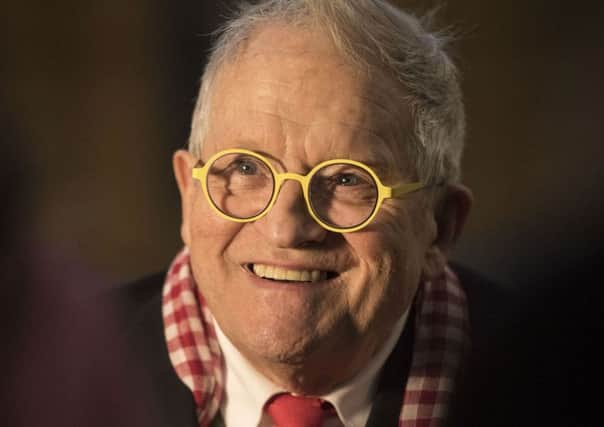Anthony Clavane: David Hockney was inspired by a post-war Bradford basking in the glow of urban renewal


Politics is so fast-moving these days that, by the beginning of the New Year, Our Jeremy might well have been replaced by yet another here-today-gone-tomorrow-gaffe-prone minister.
At least, if this does happen, he will be able to spend more time with his Lego.
Advertisement
Hide AdAdvertisement
Hide AdWright has been widely mocked for boasting, during a radio interview, about his “very large” collection of the Danish children’s building bricks. And, despite the press being part of his brief, he has admitted to not buying any newspapers. Not even The Yorkshire Post. Just the man to lead a review into the future of journalism.
There are other extraordinary statements of his which are symptomatic of our philistine times. But at least the Lego lover had the good sense to support a fantastic initiative by The National Portrait Gallery earlier in the year, entitled Coming Home, in which 50 portraits were “returned” to the towns and cities which inspired their subjects.
Hull got a William Wilberforce painting, Tracey Emin went back to Margate and Jessica Ennis-Hill was loaned to Museums Sheffield. And David Hockney’s Self-Portrait with Charlie was exhibited at the Cartwright Hall art gallery in Bradford.
Hockney’s year has been as good as Wright’s has been bad. Forget Banksy’s shredding stunt, Charlotte Prodger winning the Turner Prize and Grayson Perry’s mischievous Summer Exhibition. 2018 was the Bradfordian’s year.
Advertisement
Hide AdAdvertisement
Hide AdThe Hockney brand appears to be unstoppable. Last month, his Portrait of an Artist (Pool with Two Figures) was sold at Christie’s in New York for £70m – an auction record for a work by a living artist. Even his childhood home in Eccleshill has gone up for sale. And – surely the ultimate accolade – he was described on a recent episode of Pointless as the world’s most famous painter. The 81-year-old has a long association with Cartwright Hall, often visiting it as a child and young man.
In October, it was reported that the opening of one of its galleries, which has been named after him, saw a rise in visitors. The same report, however, also recorded that austerity-driven cuts had led to the slashing of budgets for Bradford’s museums and library services.
In one of his rare gaffe-free statements, Wright welcomed the Coming Home initiative by noting that “every corner of the UK has well-known faces who have played a significant role in our nation’s history. I am delighted that 50 of these famous figures will be returning home so that current generations can be inspired by their stories.”
Hockney, a one-man northern powerhouse, was inspired by a post-war Bradford basking in the glow of urban renewal. This was a good time to be young, working-class and ambitious. Room at the Top’s ruthless, upwardly-mobile anti-hero Joe Lampton, mimicked the dynamic, can-do mentality of an Edwardian entrepreneur. Like Billy Fisher, in Billy Liar, he was determined to succeed on his own terms.
Advertisement
Hide AdAdvertisement
Hide AdHockney, too, was – and remains – his own man. As a gay man growing up in a homophobic era he found a way to live as himself and express his non-conformism through his art. Like the protagonists of those two kitchen-sink, Bradford-based films, he was keen to soar way beyond his Yorkshire roots. But Bradford made him.
In a 1960s’ interview with JB Priestley, Room at the Top novelist John Braine praised it for being “dominated more than any other in England... by a success ethos”.
The bustling Bradford of Priestley’s childhood was a great source of communal pride. It offered, he wrote, “three daily papers, and a weekly; the subscription concerts on Fridays, the Bradford Permanent series on Saturdays and superb choral singing almost any night; two theatres, two music halls, two or three professional concert parties; an Arts Club, a playgoers’ society...”
No mention – Secretary of State please note – of any Lego-based activities.